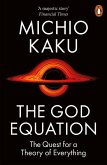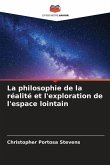The book addresses the philosophy of causation, and the philosophy of physics, the biological sciences, anthropology, and psychology, in new ways: Does access to different cultural patterns and higher written languages have legitimate status as causes and causal factors in world history, independent from the claims of some physicists and physicalist philosophers that all phenomena can or should be reduced to causes at the level of particle physics? The philosophy of opposites: Given the nature of gravity, light, and quantum computing, I suggest a model of deep space exploration that is an opposite of earlier models of space exploration: send a stream of light or electromagnetic spectra ahead of a spacecraft or spacecraft traveling in space, program instructions on the light or electromagnetic spectra to spark or generate an explosion in or near a large fuel source in space, such as a nebula; in principle, the explosion in space using a large fuel source such as a nebula would generate a mass so large that it would warp space and pull stars, solar systems, planets, in the direction of the spacecraft that distributed that laser stream of particles light years earlier.
Bitte wählen Sie Ihr Anliegen aus.
Rechnungen
Retourenschein anfordern
Bestellstatus
Storno








